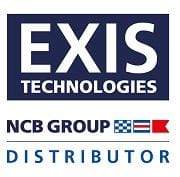
What’s it for?
The International Convention for Safe Containers (CSC) was finalized in 1972 in response to the rapid increase in the use of freight containers and the development of specialized container ships. It took effect in 1977 and applies to containers of a prescribed minimum size having corner fittings (devices which permit handling, securing or stacking).
The convention has two goals:
- to provide test procedures and strength requirements that ensure the safety of people transporting and handling containers; and
- to provide uniform international safety regulations that apply to transport by vessel, by road, and by rail, in order to harmonize requirements that individual nations impose.
Containers which are manufactured to meet CSC requirements have a safety approval plate—often called a “CSC Plate”—affixed, containing technical data as prescribed by CSC. This plate is recognized by all Contracting States to the CSC. It allows containers to move in international transport without undue delay by providing all the information needed for an inspector to ensure compliance quickly and completely.
Amendments to the CSC in 1983 extended the interval between required re‑examinations to 30 months (where it remains today) and allowed for a choice of container re‑examination procedures between the original periodic examination scheme or a new “Approved Continuous Examination Program” (ACEP).
What has changed?
The previous edition of the CSC was published in 1996, following amendments adopted in 1993. IMO resolution MSC.310(88) was adopted in December 2010, and took effect at the start of 2012. The major changes are:
- ACEP programs now must be reviewed once every 10 years to ensure they’re still viable
- Requirements for ACEP programs have been expanded to more clearly describe the validity of, and elements to be included in such programs
- Specifications for Safety Approval Plates have been updated to require conspicuous marking for containers with limited stacking or racking capacities; this is to align with the ISO 6346 standard
- A new test has been added for containers being approved for operation with one door removed
- A new annex III is added on control and verification, providing authorized officers with measures to assess the integrity of structurally sensitive components of containers and to decide whether a container is safe to continue in transportation.
When is it available?
The English version of CSC 2012 is expected to be available in late March 2012, with French and Spanish translations to follow soon after.
Update: the English CSC 2012 is now available.
Update: the Spanish translation of CSC 2012 is now available.








